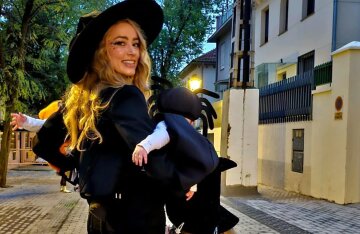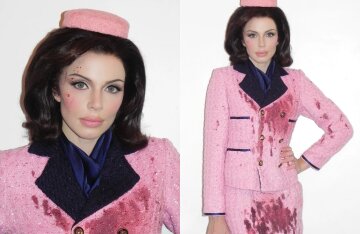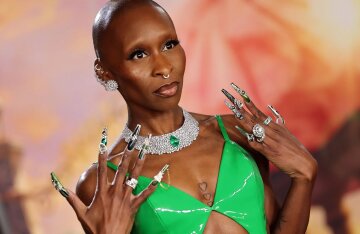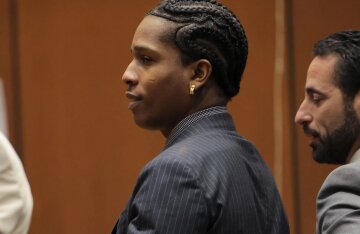"Perfect Babe." The story of the main socialite of New York and Truman Capote's best friend, whom he betrayed
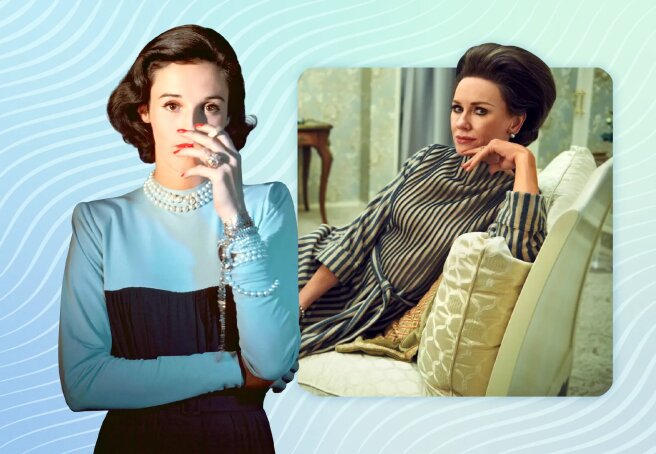
It seems that the entire secular (and not only) world froze in anticipation of the premiere of the series by Ryan Murphy and Gus Van Sant “Feud: Capote vs. Swans.” The story of the scandalously ended friendship between writer Truman Capote and the New York socialites of the 1970s, whom he called his “swans,” formed the basis of the film adaptation. The main role not only in the series, but also in the writer’s life was assigned to his best friend, the “perfect” Babe Paley. Spltnk tells who the “swan” was that Capote let down the most.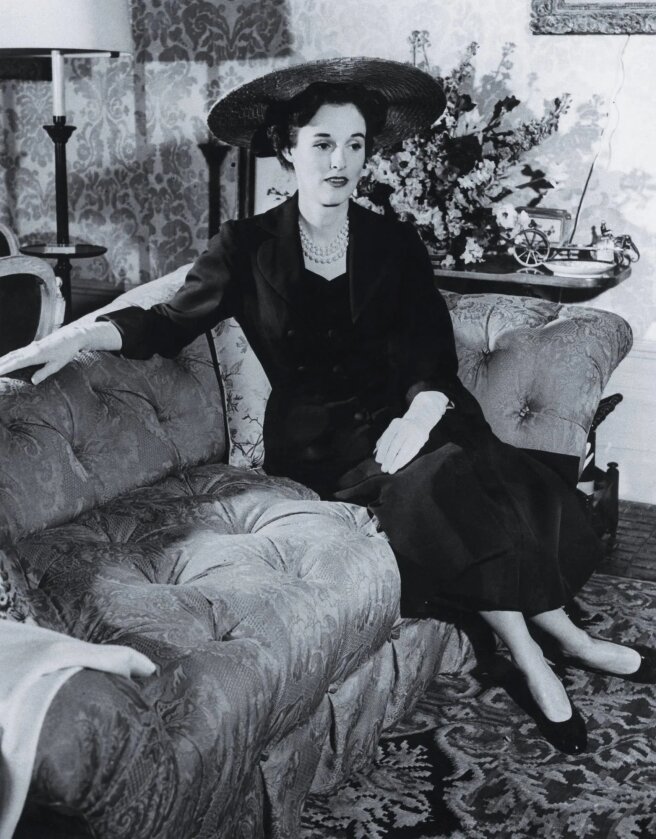
Barbara Cushing, affectionately nicknamed Babe, was born in 1915 in Boston in the family of the famous surgeon Harvey Cushing and his wife Katherine Stone. She grew up in Brooklyn with her older sisters Mary and Betsy: the three of them were later nicknamed the “amazing Cushing sisters.” The beauty and upbringing of the girls helped them easily find grooms from the circle of influential New York families: Mary married Vincent Astor from a family of famous American aristocrats, and Betsy married James Roosevelt, the son of former US President Franklin Roosevelt.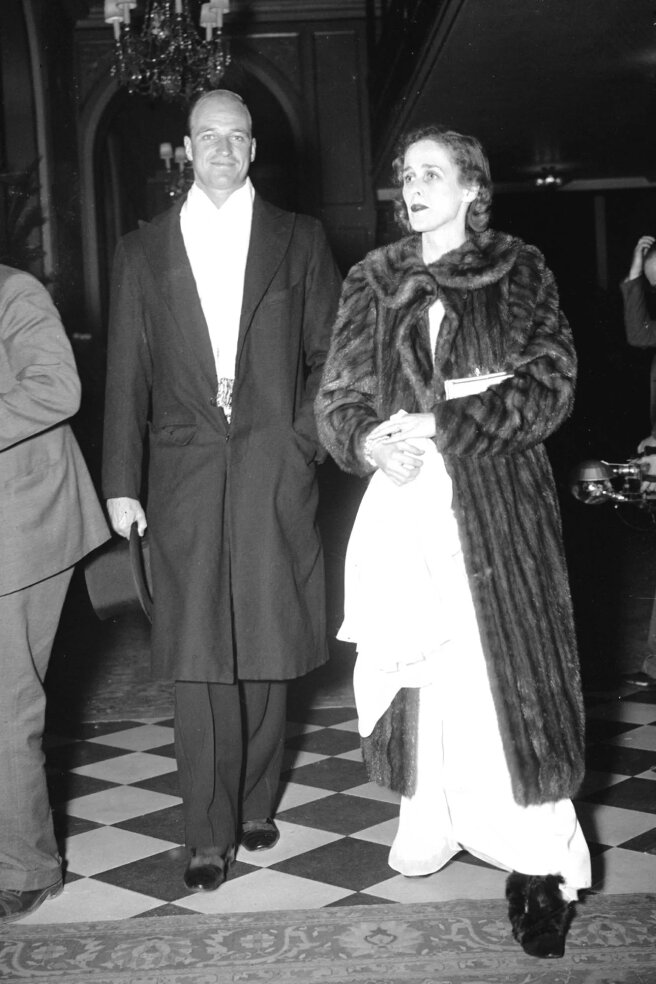
At the age of 23, the still unmarried Babe arrived in New York, where she was hired as a fashion editor at Vogue magazine, gaining access to fashionable designer items. She quickly joined the local secular society, as she was always cheerful, friendly and impeccably dressed. Babe had a sense of fashion and was not afraid to look the way she wanted and not be misunderstood. As a result, women who closely followed Paley's sometimes bold style imitated her. One day, Barbara tied a silk scarf on the handle of her bag because she didn’t know where to put it, and was caught by the paparazzi. The next day, fashionistas began to copy this technique. Paley also later became known for not dyeing her hair, preferring natural gray hair.
After three years of work at Vogue, in 1941, Time magazine named Barbara the second best-dressed woman in the world: she was second only to Wallis Simpson, the wife of the abdicated British throne of King Edward VIII. For the next 14 years, Paley topped the "best dressed" list.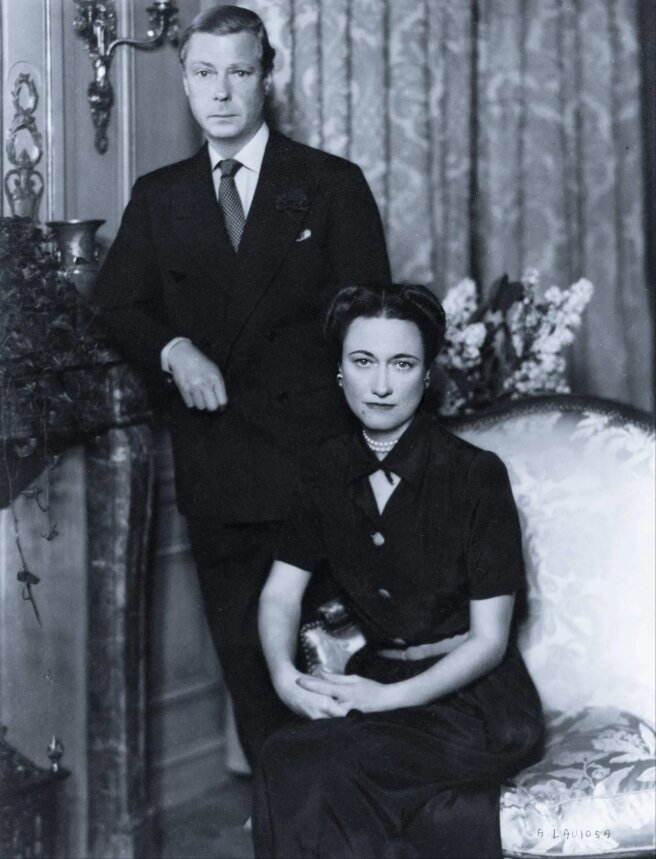
Paley's personal life was no less interesting than her glossy career. While working at Vogue, she met her first husband. In 1940, at St. Luke's Episcopal Church in East Hampton, Babe married, like her sisters, to Stanley Grafton Mortimer Jr., a member of the influential New York family. He was a classic member of the local elite - good-looking, a Harvard graduate and successful advertising executive, a golf enthusiast and a member of the jockey club. During the marriage, Babe gave birth to two children, Stanley Grafton and Amanda Jay, for whom, as it will become known later, they were far from the first place.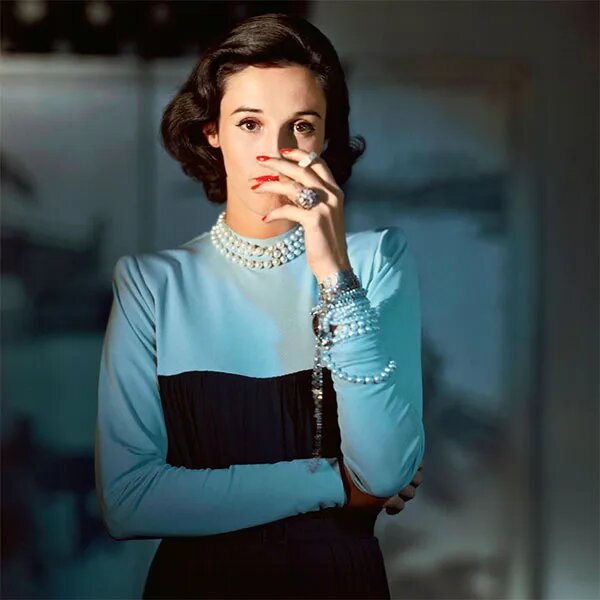
In 1947, Babe left her post at Vogue due to her second marriage. A year earlier, the fashion icon divorced Stanley Grafton, receiving a handsome settlement from his family's trust fund, and swore allegiance to CBS television company founder William Paley, with whom she spent the rest of her life. William was 14 years older than his wife, rich, interested in art and high society - and became an ideal match for Paley.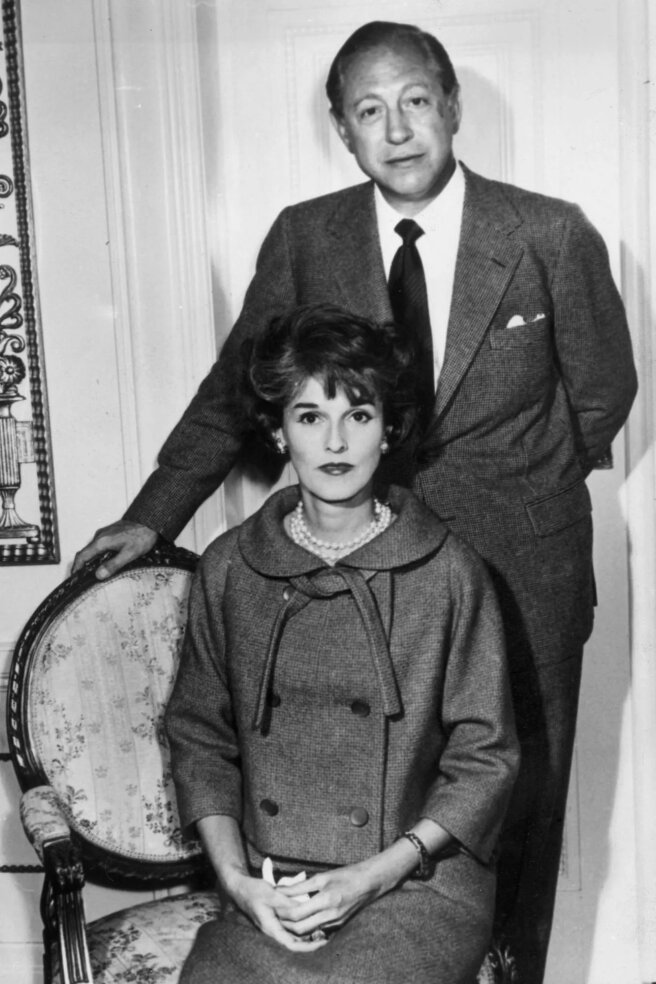
After leaving the magazine, the former fashion editor began developing her “career” as a socialite with an impeccable reputation. Her goal was a privileged position in society thanks to the high social status sponsored by her influential husband. An obsession with social life undermined Paley's interactions with her children: daughter Amanda later admits that her relationship with her mother was "virtually non-existent" and that the distance between them "was her choice, not mine."
Babe and William had all the trappings of New York bohemians: they spent their weekdays in a luxurious apartment at the St. St. Regis in Manhattan, and on weekends they escaped the noise of the city to their own estate, Keeluna Farm, on Long Island. Later, in 1957, the couple purchased a secluded estate on Squam Lake in New Hampshire, which they named Kiluna North. There, for the next three years, the Paley family held social parties with celebrities.
The couple created their own elite circle of friends, which included: writer Truman Capote, his colleague Slim Keith, Jacqueline Kennedy's younger sister Lee Radziwill, Anne Woodward and CC Guest. Capote nicknamed this famous group of socialites his “swans.” The writer's closest contact was with Paley, who trusted him with all her deepest secrets. In her second marriage, Babe gave birth to two more children: son William Jr. and daughter Kate. She suffered from loneliness during her husband’s constant infidelities, which Capote described in detail, so she often left with her children for an estate on Long Island.
Babe and Truman spent a lot of time together, were kindred spirits and understood each other without words. At times when she needed support, Capote would send her a bouquet of lilies of the valley without a note, and she would do the same. The writer was the only one from her circle whom she allowed close to her and trusted with personal and family secrets.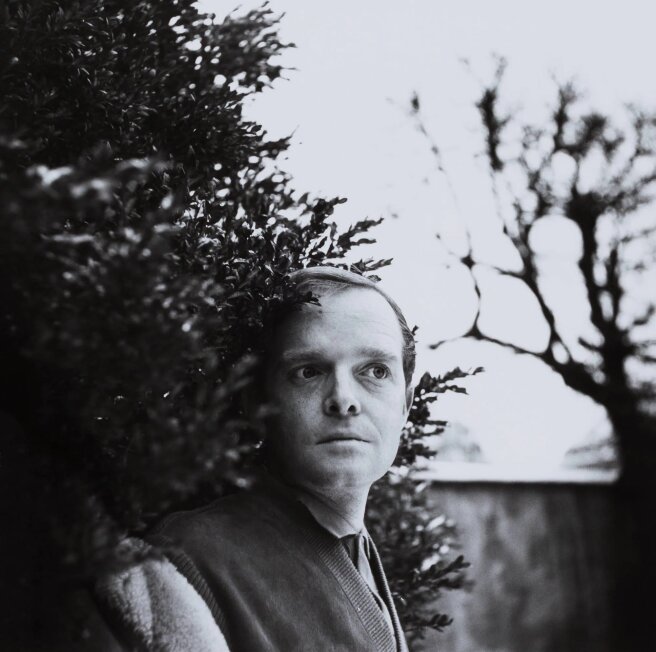
At some point, this friendship even began to scare her friend Slim Keith, who tried to reassure Babe that she was making a mistake. “This is bad news,” Slim said, “he will betray you.” “Oh, he wouldn’t do that to me,” Babe answered. “Our friendship is deep and lasting. We love each other, we trust each other.”
The friendship between Paley and Capote, which lasted about twenty years, ended in 1975. On the day when she picked up the latest issue of Esquire magazine with a published excerpt from the writer’s unfinished novel “Answered Prayers.” In it, the author revealed the family secrets of New York bohemia and showed his influential friends in an unsightly light. Despite the fact that their names were changed, the entire high society of New York knew who they were talking about. Truman learned most of the intimate details posted in the magazine from his beloved “swan” Babe. Paley could not forgive the betrayal and did not say another word to Capote until her death. In addition, the writer lost the trust of most of his friends and his status in secular society.
After seeing his friends' reactions to just one passage from his new book, Capote was "totally abandoned" but also angry at them. "Hey! What did they expect from me? I'm a writer!" - he said. Because of the scandal, Truman was left completely alone, did not leave the house for a long time and drank a lot.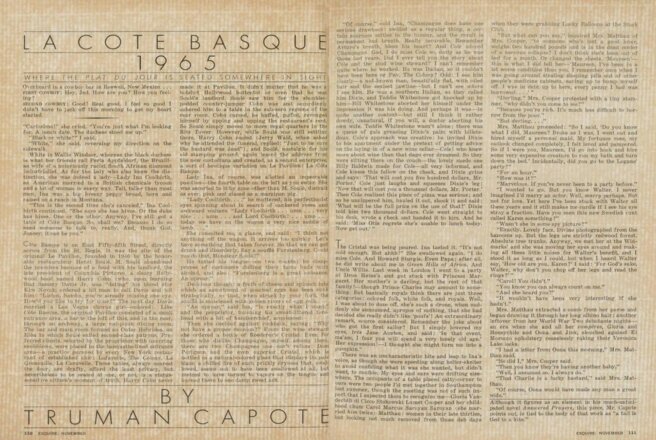
The second season of the series “Feud” is dedicated to the consequences of this publication, even tragic ones, in which the main roles were played by Naomi Watts (Babe Paley), Diane Lane (Slim Keith), Chloe Sevigny (Cee-Z Guest), Calista Flockhart (Lee Radziwill ), Demi Moore (Anne Woodward) and Molly Ringould (Joan Carson). Tom Hollander stars as Truman Capote. The script is based on Lawrence Leamer's bestseller "Capote's Women: A True Story of Love, Betrayal, and the Swan Song of an Era."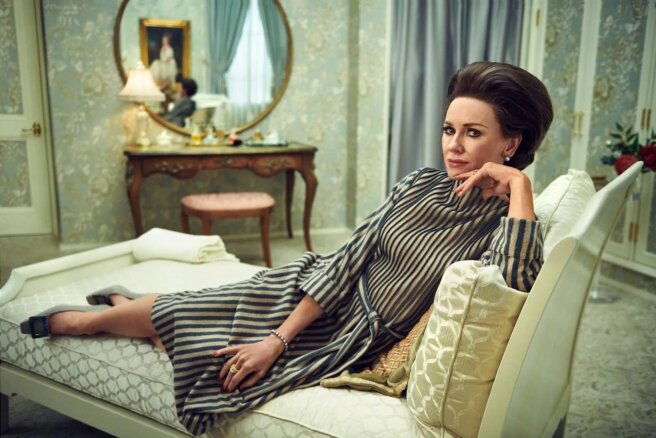
In 1974, Babe Paley was diagnosed with lung cancer, possibly due to her habit of smoking cigarettes. Barbara herself prepared for her death, carefully planning the funeral down to the decor of the hall, the choice of dishes and wine. She distributed personal items and a collection of jewelry among friends and relatives, wrapped them in bright paper, and created cards with instructions on how to distribute the “inheritance” after her passing. Babe died in 1978 at the age of 63. William Paley was buried next to his wife after his death in 1990.
Truman Capote always called Paley's only flaw her "perfection" and did not try to renew their relationship while she was alive. He knew without words that his beloved “swan” would never forgive him.






